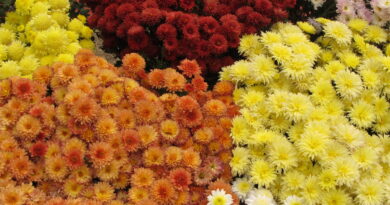Passion flowers
The Enigmatic Allure of Passion Flowers: Unraveling Nature’s Exquisite Masterpiece
Introduction
In the vast tapestry of nature, certain blooms stand out as exquisite masterpieces, captivating hearts and minds with their intricate beauty and mysterious allure. Among these, the passion flower (genus Passiflora) emerges as a true marvel, boasting a unique blend of vibrant colors, intricate patterns, and cultural significance. In this exploration, we delve into the fascinating world of passion flowers, uncovering their diverse species, symbolic meanings, and the profound impact they have had on art, culture, and even medicine.
The Botanical Marvels: A Symphony of Colors and Shapes
Passion flowers, with their intricate floral structures, are a testament to the wonders of nature. Characterized by a striking array of colors, including shades of purple, blue, red, and yellow, these blooms often feature a distinctive crown-like structure, delicate tendrils, and radial filaments. The name “passion flower” is thought to originate from the symbolic representation of the Passion of Christ, with early Christian missionaries interpreting the flower’s unique parts as symbols of the crucifixion story.
A Journey Through Species
The passion flower family comprises over 500 different species, each with its own unique charm. Among these, the Passiflora incarnata, commonly known as the Maypop, is native to North America and is renowned for its beautiful white and purple blooms. The Passiflora caerulea, or blue passion flower, showcases enchanting blue and white petals, captivating enthusiasts around the world. From the vibrant hues of the Passiflora alata to the elegant simplicity of the Passiflora suberosa, the passion flower family offers a delightful variety that continues to inspire botanists and nature enthusiasts alike.
Cultural Significance: Symbolism and Mythology
Across various cultures and centuries, passion flowers have held symbolic meanings and significance. In Christian theology, the unique floral parts of the passion flower were seen as symbols of the Passion of Christ—the three stigmas representing the nails, the five anthers symbolizing the wounds, and the tendrils representing the whips used during the Crucifixion. In South American folklore, passion flowers were associated with love, with legends often telling stories of passion flowers blooming where two lovers met their tragic end.
Art, Literature, and Passion Flowers
The allure of passion flowers extends far beyond their physical presence; they have inspired artists, writers, and poets for generations. Artists such as Maria Sibylla Merian and Vincent van Gogh have immortalized these blooms on canvas, capturing their delicate beauty and intricate details. In literature, passion flowers have been used as symbols of beauty, mystery, and fleeting moments, appearing in works by renowned authors like Gabriel Garcia Marquez and Emily Dickinson. Their enchanting presence in art and literature echoes the universal fascination with these exquisite blossoms.
Medicinal and Culinary Uses
Beyond their aesthetic appeal, passion flowers have found applications in traditional medicine and culinary arts. In herbal medicine, passion flower extracts are often used for their calming and sedative properties, making them a popular remedy for anxiety and insomnia. Additionally, the fruit of certain passion flower species, such as the Passiflora edulis (passion fruit), is not only delicious but also packed with essential nutrients and antioxidants, making it a popular ingredient in smoothies, desserts, and cocktails.
Conservation Efforts and Future Prospects
As the world becomes increasingly aware of the importance of biodiversity and conservation, passion flowers, like many other plant species, face challenges due to habitat loss and climate change. Conservation efforts are underway to preserve these botanical wonders, ensuring that future generations can continue to marvel at their beauty and learn from their ecological significance.
Conclusion: A Testament to Nature’s Creativity
In the enigmatic allure of passion flowers, we find a testament to nature’s boundless creativity. From their vibrant colors and intricate structures to their diverse cultural symbolism and practical applications, passion flowers continue to fascinate and inspire people worldwide. As we marvel at the delicate tendrils and radiant blossoms, we are reminded of the profound connections between humanity and the natural world, urging us to appreciate, protect, and celebrate the botanical marvels that grace our planet. Passion flowers, with their timeless elegance, serve as a reminder of the beauty that surrounds us, inviting us to pause, admire, and cherish the wonders of nature in all their splendid forms.



